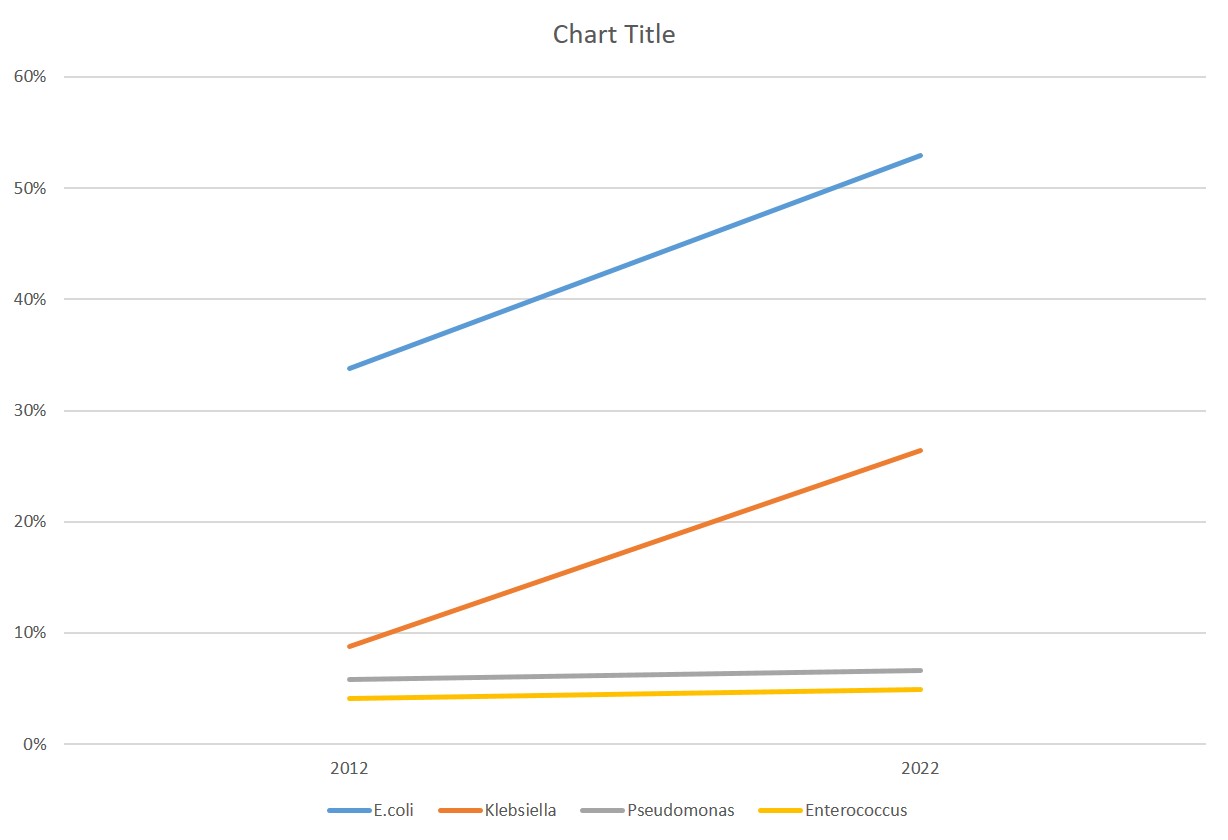Trends of antibiotic resistance in E. coli, Klebsiella Spp., Pseudomonas aeruginosa and Enterococcus spp. Urinary tract infection in renal transplant recipients from Pakistan over a decade
Sunil Kumar Dodani1, Sana Jamil2, Asma Nasim1.
1Infectious Disease, Sindh Institute of Urology and Transplantation, Karachi, Pakistan; 2Microbiology, Sindh Institute of Urology and Transplantation, Karachi, Pakistan
Introduction: Antimicrobial resistance is a major public threat worldwide. Multi drug resistant (MDR) Klebsiella species have become one of the most common nosocomial pathogens in hospitals. Solid organ transplant recipients are more prone to infections with MDR organisms due to immunocompromised status, multiple hospital visits and increase exposure to antibiotics. There is paucity of data on antibiotic susceptibility pattern among renal transplant recipients from Pakistan. This study is conducted to find the trends in antimicrobial resistance pattern among common organisms isolated in urinary tract over a 10-year period in renal transplant recipients. The aim is to guide the physicians regarding decision over empirical antimicrobial choices.
Methods: Sindh Institute of Urology and Transplantation (SIUT) is a 700-bedded tertiary care hospital in Karachi, Pakistan. It has a comprehensive living donor renal transplantation program. A retrospective computerized data review of urine cultures from renal transplant recipients in 2012 and 2022 was conducted. The trend and sensitivity patterns of E.coli, Klebsiella spp. Pseudomonas aeruginosa and Enterococcus species was collected. The resistance pattern of amoxicillin-clavulanic acid, ceftriaxone (ceftazidime for Pseudomonas aeruginosa), piperacillin-tazobactam, ciprofloxacin, amikacin, co-trimoxazole and imipenem were compared over the 10 years period.
Results: A total of 2,088 out of 6,249 (33%) and 2902 out of 8,115 (36%) urine cultures were positive in 2012 and 2022 respectively. The most common organisms isolated and their trend in the last decade is shown in Figure 1. Over the decade, E-coli strains become 76% resistant to ciprofloxacin, ceftriaxone resistance has increased to 65% and imipenem to 10%. In Klebsiella spp. imipenem resistance has increased to 22%. Pseudomonas aeruginosa has become 62% resistant to imipenem. Regarding Enterococcus spp. there is a rise in vancomycin resistance over the decade from 13% to 22%. (Figure 2).
Conclusion: Resistance to broad-spectrum antimicrobials has been increased with >10% increase in Carbapenem resistance over the last 10 years. E-coli have particularly become more resistant over the decade. We are also seeing more vancomycin resistant enterococcus. The alarming increase in resistance may lead to increased morbidity in renal transplant recipients because we left with only injectable options. We need a robust stewardship program for judicious use of antimicrobials and better infection control measures to contain increasing resistance.


[1] antibiotic resistance
[2] Urinary tract infection
[3] renal transplant
